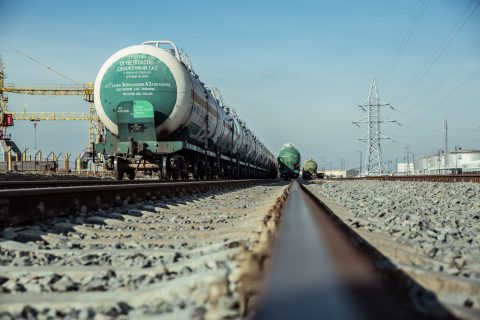These Silk Road product trends might be worth your attention

Endless lines of text have been written in the past months to analyse and assess the development of Eurasian rail transport. The drop in Silk Road volumes in 2022 was apparent due to all the geopolitical shifts. However, some products did well last year on Eurasian rails, illustrating a more optimistic and multi-dimensional picture for the coming months.
Yes, 2022 was challenging, and yes, both westbound and eastbound volumes plumed significantly. Indicatively, in the first three quarters of 2022, rail freight shipping (TEUs) between China and the EU decreased by 25 per cent in westbound and 36 per cent in eastbound.
Nevertheless, amidst the wave of pessimism that hit the industry last year, the Silk Road kept developing in other ways. Specifically, there have been some shifts concerning cargo types travelling on rail. There are cases where the volumes of specific products have rebounded and cases where new products entered rail.
The main message is that Silk Road development cannot be confined to one event, namely the Russian invasion of Ukraine. In contrast, the industry must consider multiple factors and follow the trends to draw short or long-term strategies.
This article is based on the research of Ganyi Zhang, political and economic strategist at GEODIS, originally published in Upply. The data used is based on the ERAI 1520 index. Zhang also presented her findings during the European Silk Road Summit 2022 in Duisburg, Germany.
Westbound traffic sees product diversification
The main trends concerning westbound Silk Road traffic in 2022 stem from the machinery and chemical industry. Zhang’s research showed that machinery goods leaving China for Europe decreased significantly after March 2022, just two months into the war and after the first sanctions hit Russia. However, from April onwards, machinery cargo noted a gradual, not impressive, but noticeable, recovery. Of course, compared to 2021, the total volumes were way lower.
On the other hand, more chemical products found their way from China to Europe by rail. The transport of chemical cargo noted a 77 per cent year-on-year growth, with a big spike noticed in June 2022. Since June, volumes dropped slightly and rebounded by summer’s end, remaining relatively stable.
Zhang’s findings show that chemical westbound volume growth is due to three factors. First, the EU’s attempts for energy security increased the import needs for Chinese chemicals. Second, bottlenecks in ocean freight made rail more attractive to shippers. Last but not least, the Chinese rail portfolio became more diversified and provided more space for more sectors to ship their products by rail.
Eastbound: milk powder shifts to rail
Concerning eastbound volumes in 2022, understandably, the drop was more significant than westbound volumes, but this is understandable considering the general volume imbalance between the two directions, which is almost a given fact.
Zhang’s report identified milk powder as a champion for the past year in rail transport from Europe to China. The transportation of foodstuff and beverages generally grew compared to 2021 by some thousand TEUs. Nevertheless, milk powder showcased impressive growth from 2020 onwards, which spiked in 2022.
Specifically, milk powder is a product that mostly used air transport between Europe and China before 2020. When the pandemic hit, milk powder volumes started shifting to rail and increasingly staying there. As a result, the product experienced the best year in 2022, with its volumes fluctuating sometimes but maintaining an upward trajectory.
What to expect?
Zhang’s conclusion is that you cannot predict the future development of cargo volumes on the Silk Road. That is because different and overlapping situations, e.g. energy crisis, inflation, and war, create different and multi-dimensional needs every time. A relevant and popular product in 2019 might not find its way on rail in 2022. Respectively, products currently thriving on the Silk Road might have been overlooked a few years ago.
Some indicators, though, to help forecast how volumes will develop concern the global economy, the demand versatility in regional markets, and the Chinese policy regarding which products are prioritised for rail shipping. Both indicators keep shifting continuously, however.
Follow RailFreight.com on Google News and get the latest industry updates.
You just read one of our premium articles free of charge
Want full access? Take advantage of our exclusive offer




